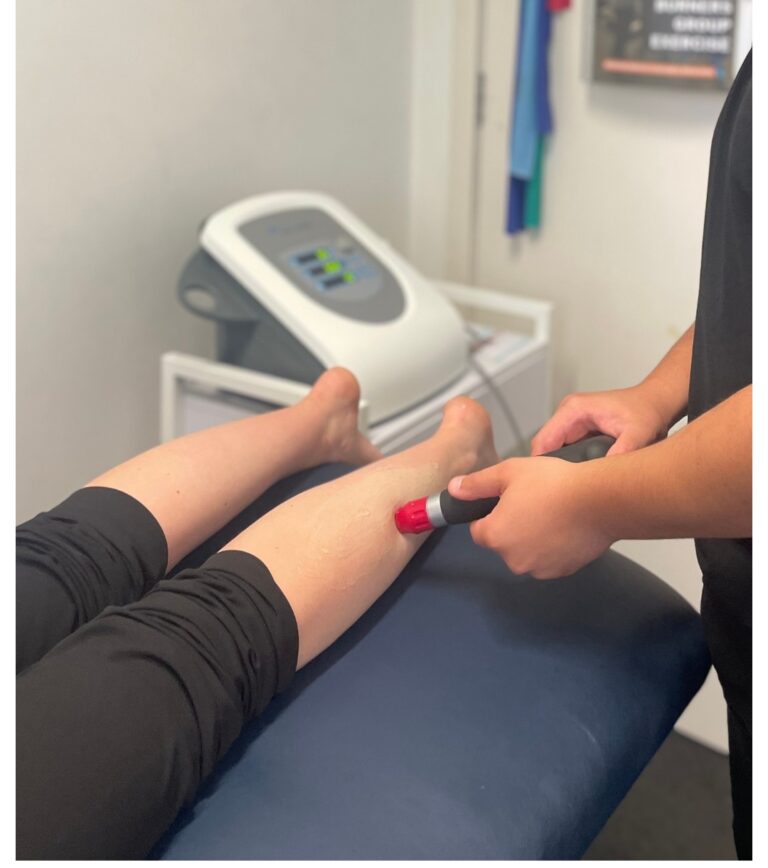What is Shockwave Therapy?
Shockwave therapy is a non-invasive treatment that helps to stimulate the body’s natural healing process.
Research has shown that shockwave therapy can provide significant relief for chronic tendon and fascia-related injuries, which have persisted for more than six weeks. Conditions such as plantar fasciitis and achilles tendinopathy can see positive outcomes when combined with a comprehensive treatment plan.
Shockwave therapy operates through six distinct mechanisms, each playing a role at different stages of treatment. Some mechanisms take effect early on, while others require a higher level of impact (greater shockwave pressure) to become effective.
The benefits of shockwave can be felt immediately, with pain reduction a common outcome from the initial treatment. In most cases, treatment cycles range from 3-6 sessions, with shockwave therapy being delivered in conjunction with bio-mechanical advice (footwear, etc) and a targeted exercise program to address underlying causative factors.


Is Shockwave suitable for everyone?
Will all injuries benefit from ‘shockwave therapy”?
The short answer is no.
Acute foot injuries, for example, are unlikely to benefit from shockwave therapy because it primarily stimulates the healing of older or more chronic injuries.
Are all shockwave machines the same?
Again the short answer is no.
‘Sham’ shockwave machines are not authentic shockwave machines, but rather machines that deliver gentle massages that are below the therapeutic level required to trigger the healing response within your tendon. This level is commonly cited in research as above 4.0 bars of pressure on your shockwave unit. Anything below 4 bars may offer some comfort, but it won’t induce the cavitation within the tissue necessary to promote healing. At best, low-intensity sham shockwave therapy may feel soothing and numbing, and at worst, it’s a wasted investment.
Shockwave also isn’t suitable for you if you are pregnant, have bone cancer, or haemophilia.
Who can benefit from Shockwave Therapy?
So, let’s identify who can benefit from shockwave therapy.
If you:
- Have been battling plantar fasciitis for more than six weeks.
- Are hindered by achilles tendinopathy.
- Recognise that your tendon or fascia injuries have persisted for more than six weeks.
Then there’s a good chance that shockwave therapy could be a valuable inclusion as part of your management plan for your injury.

